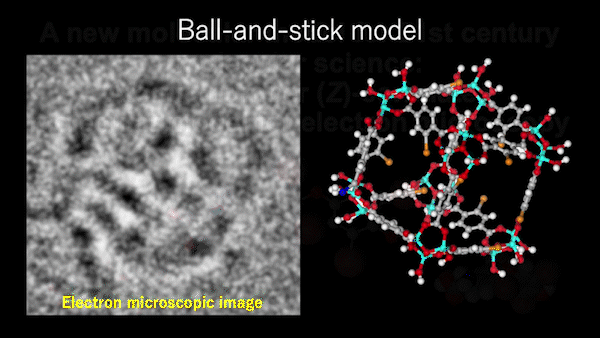The creation of two- and three-dimensional models of atoms and molecules can be done using multiple approaches.
 Model comparison. The researchers’ Z-correlated molecular model is compared to the ball-and-stick and the CPK models. © 2021 Nakamura, Harano et al.
Model comparison. The researchers’ Z-correlated molecular model is compared to the ball-and-stick and the CPK models. © 2021 Nakamura, Harano et al.
Researchers discovered that the conventional molecular models did not suit the images they viewed with the emergence of cutting-edge apparatus that exhibits the potential to image samples at the atomic scale. Hence, a better method has been developed by scientists to envision molecules building on such conventional techniques.
Their models suit the imaging data that is acquired, and they believe that the models can help chemists with their intuition for rendering molecular images.
Those reading this article are probably familiar with conventional ball-and-stick models of atoms and molecules, where balls of various sizes and colors constitute several atomic nuclei, and the sticks signify the properties of the bonds present between atoms.
Even though these are considered to be beneficial educational tools, they are quite simple compared to the reality reflected by them. Chemists make use of models like the Corey–Pauling–Koltun (CPK) model, which is similar to the ball-and-stick model but with the balls inflated so that they intersect.
The CPK model tells chemists more about the way components of a molecule connect better compared to the ball-and-stick model.
Over the past few years, it has finally become possible to just not capture the structures of molecules but record their motion and interactions in videos as a result of technologies like atomic resolution transmission electron microscopy (AR-TEM). This is sometimes known as “cinematic molecular science.”
But it is with this leap in the capacity to envision the invisible that the ball-and-stick or CPK models become an obstacle instead of a help. At the University of Tokyo Department of Chemistry, scientists were trying to fit these models with the images they were viewing, and they ran into a few issues.
The ball-and-stick model is far too simple to accurately describe what is really going on in our images. And the CPK model, which technically shows the spread of the electron cloud around an atomic nucleus, is too dense to discern some details. The reason is that neither of those models demonstrate the true sizes of atoms that images from AR-TEM show.
Koji Harano, Professor, The University of Tokyo
As far as the AR-TEM images are concerned, the size of each atom is directly associated with that atom’s atomic weight, called Z. Hence, Professor Eiichi Nakamura and his group chose to alter a ball-and-stick model to fit their images.
Here, every nucleus present in the model was sized as per the Z number of the nucleus it constitutes and named it Z-correlated (ZC) molecular model. They retained the same color system utilized in the CPK model, originally initiated by American chemists Robert Corey and Linus Pauling in 1952.
A picture is worth a thousand words, and you can compare AR-TEM images to the first-ever photograph of a black hole. They both show reality as never seen before, and both are far less clear than how people probably imagine those things should look.
Eiichi Nakamura, Professor, The University of Tokyo
Nakamura added, “This is why models are so important, to bridge the gap between imagination and reality. We hope the Z-correlated molecular model will help chemists analyze electron microscope images based on intuition without even the need for any theoretical calculations, and open up a new world of ‘cinematic molecular science.”
Journal Reference:
Xing, J., et al. (2022) Atomic-Number (Z)-Correlated Atomic Sizes for Deciphering Electron Microscopic Molecular Images. Proceedings of the National Academy Sciences of the USA. doi.org/10.1073/pnas.2114432119.